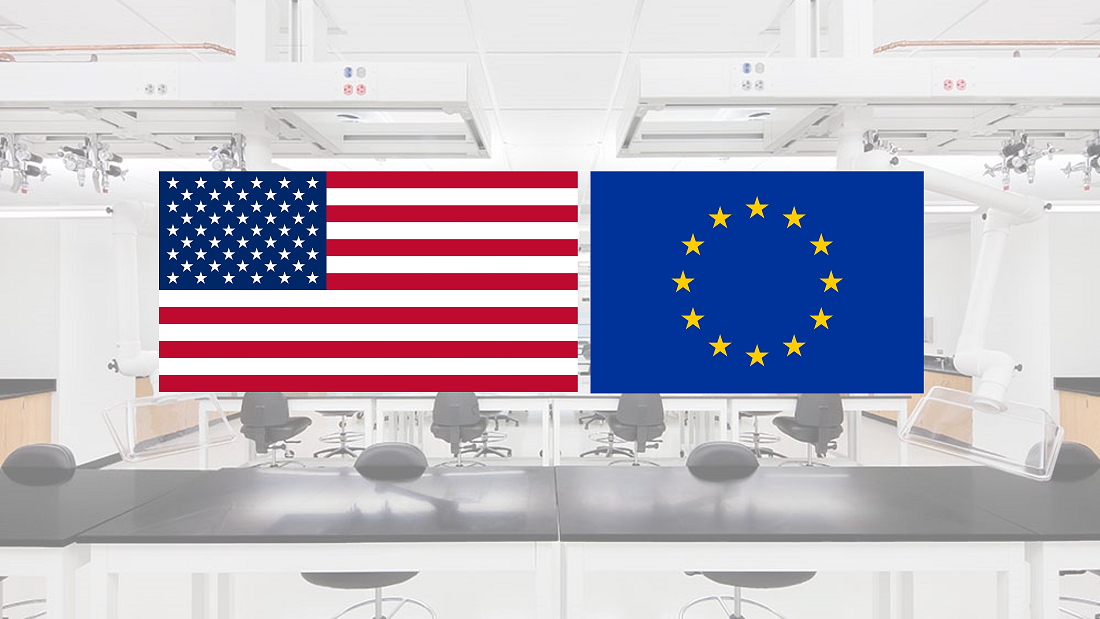American Vs European Laboratory Standards How Do They Compare
A fully functional and well-equipped laboratory, at a minimum, ensures quality scientific work. In addition to the focus on the equipment to install and design the laboratory space, it’s important to consider the quality aspect of the laboratories too. Initially, quality management in laboratories only focused on testing laboratories and calibration laboratories, but now, compliance is the new buzzword. In the laboratory industry, if you are not compliant, none of your work matters because there’s no account on the quality of it.
WHY IS ACCREDITATION IMPORTANT?
The process of accreditation started in the early 1920s, but the first international standards for laboratory accreditation was established by the International Organization for Standardization (ISO) in 1978. Now, many national and international bodies have established quality standards and rigorously monitor laboratories that are being set up in academia and industry. There are widely enforced standards such as the ISO/IEC 17025 (Competence for testing and calibration laboratories) and ISO 15189 (Quality management system in medical laboratories). Both the accreditation systems have been introduced by the International Laboratory Accreditation Cooperation (ILAC).
The primary purpose of laboratory accreditation is to ensure any results published from the laboratory can be accepted nationally or internationally with confidence. The reason it can mark them with confidence is due to certification on a periodic basis.
WHAT ARE THE DIFFERENCES BETWEEN AMERICAN & EUROPEAN LABORATORY STANDARDS?
When discussing laboratory accreditation standards, despite the widely accepted international standards, there are still many differences between the American and European standards. The governing body in these regions has certain differences because of their processes and end goals. This is widely observed in the clinical industry involving testing, approval, and manufacturing of drugs and devices for various clinical purposes.
There are two major sets of guidelines followed by the laboratory industry to ensure compliance – Good Laboratory Practices (GLP) and Good Manufacturing Practices (GMP). GLP is much more focused on ensuring the scientific data produced within any laboratory is reproducible, auditable, and of high integrity. GMP is focused on the manufacturing processes within a facility and ensures all the work is done following the criteria proposed by the governing bodies. Even in other industries such as chemical, maritime, engineering, etc., these are the monitoring principles to be followed.
So, how do these two practices compare within the American and European domain?
COMPARISON BETWEEN AMERICAN & EUROPEAN GLP
In USA, Food and Drug Administration (FDA) along with Environmental Protection Agency (EPA) monitors the work carried out within different laboratories. Within the European Union (EU), the work is governed by the Organization for Economic and Co-operative Development (OECD).
| Parameter | US GMP | EU GMP | |
| Similarities | Device approval process | Classification of the device based on the risk involved (Class I, Class II, Class III) | Similar classification based on essential requirements (Class I, Class IIa, Class IIb, Class III) |
| Quality control | Any product that is manufactured in the facility is subject to quality compliance checks | Similar requirements | |
| Performance, quality & safety (PQS) process | Design of the building should follow given GMP guidelines to prevent contamination | Similar requirements | |
| Differences | Approval process | After the pre-clinical testing, the company is required to file for an Investigational New Drug (IND) application. After all the testing is done, they need to apply for New Drug Application (NDA). | After pre-clinical testing, the company is required to find the Clinical Trial Application (CTA). After all phases of testing are done, they need to apply for a Market Authorization Application. |
| Market authorization | No option between centralized or decentralized process | The companies can choose between a centralized & decentralized process | |
| Review board | Institutional Review Board (IRB) | Ethics Committee | |
| Legal authorization | US FDA can take legal action against the companies in case of non-compliance | No such laws can be enforced in the EU | |
| Document request | They may or may not request all documents before or during the inspection process. Retention of records for 2 years after drug approval. | They will request all documentation before or during the inspection process. Retention of records for 5 years after drug approval. | |
| Review process | Annual product review (APR) – evaluation of each drug product & assessment for necessary changes | Product quality review (PQR) – Focuses on quality & management system | |
| Key process indicators | Use quality metrics provided by the company to perform a risk-based inspection planning | Focused on demonstrating control but also continuous improvement processes | |
| Role of the qualified person | Dependent on only one assigned individual who will sign off on quality compliance for each batch | Dependent on an entire unit that is designated to maintain compliance |
COMPARISON BETWEEN AMERICAN & EUROPEAN GMP
When it comes to GMP, there are many key differences between US FDA and EU – mostly around drug or any other clinical product. Most of these are extremely relevant for interactions with officials and any potential inspections that might come up. In the US, the FDA handles these activities and in the EU, the European Council (EC) handles compliance-related issues.
| Parameter | US GMP | EU GMP | |
| Similarities | Device approval process | Classification of the device based on the risk involved (Class I, Class II, Class III) | Similar classification based on essential requirements (Class I, Class IIa, Class IIb, Class III) |
| Quality control | Any product that is manufactured in the facility is subject to quality compliance checks | Similar requirements | |
| Performance, quality & safety (PQS) process | Design of the building should follow given GMP guidelines to prevent contamination | Similar requirements | |
| Differences | Approval process | After the pre-clinical testing, the company is required to file for an Investigational New Drug (IND) application. After all the testing is done, they need to apply for New Drug Application (NDA). | After pre-clinical testing, the company is required to find the Clinical Trial Application (CTA). After all phases of testing are done, they need to apply for a Market Authorization Application. |
| Market authorization | No option between centralized or decentralized process | The companies can choose between a centralized & decentralized process | |
| Review board | Institutional Review Board (IRB) | Ethics Committee | |
| Legal authorization | US FDA can take legal action against the companies in case of non-compliance | No such laws can be enforced in the EU | |
| Document request | They may or may not request all documents before or during the inspection process. Retention of records for 2 years after drug approval. | They will request all documentation before or during the inspection process. Retention of records for 5 years after drug approval. | |
| Review process | Annual product review (APR) – evaluation of each drug product & assessment for necessary changes | Product quality review (PQR) – Focuses on quality & management system | |
| Key process indicators | Use quality metrics provided by the company to perform a risk-based inspection planning | Focused on demonstrating control but also continuous improvement processes | |
| Role of the qualified person | Dependent on only one assigned individual who will sign off on quality compliance for each batch | Dependent on an entire unit that is designated to maintain compliance |
Now that we have laid out the key similarities and differences between American and European standards for laboratories, we hope you’ve had a good understanding of what’s needed for your laboratory. Always have a clear aim in mind before setting up so in the future when your products go for review, potential issues can be minimized.
Comments are closed.











